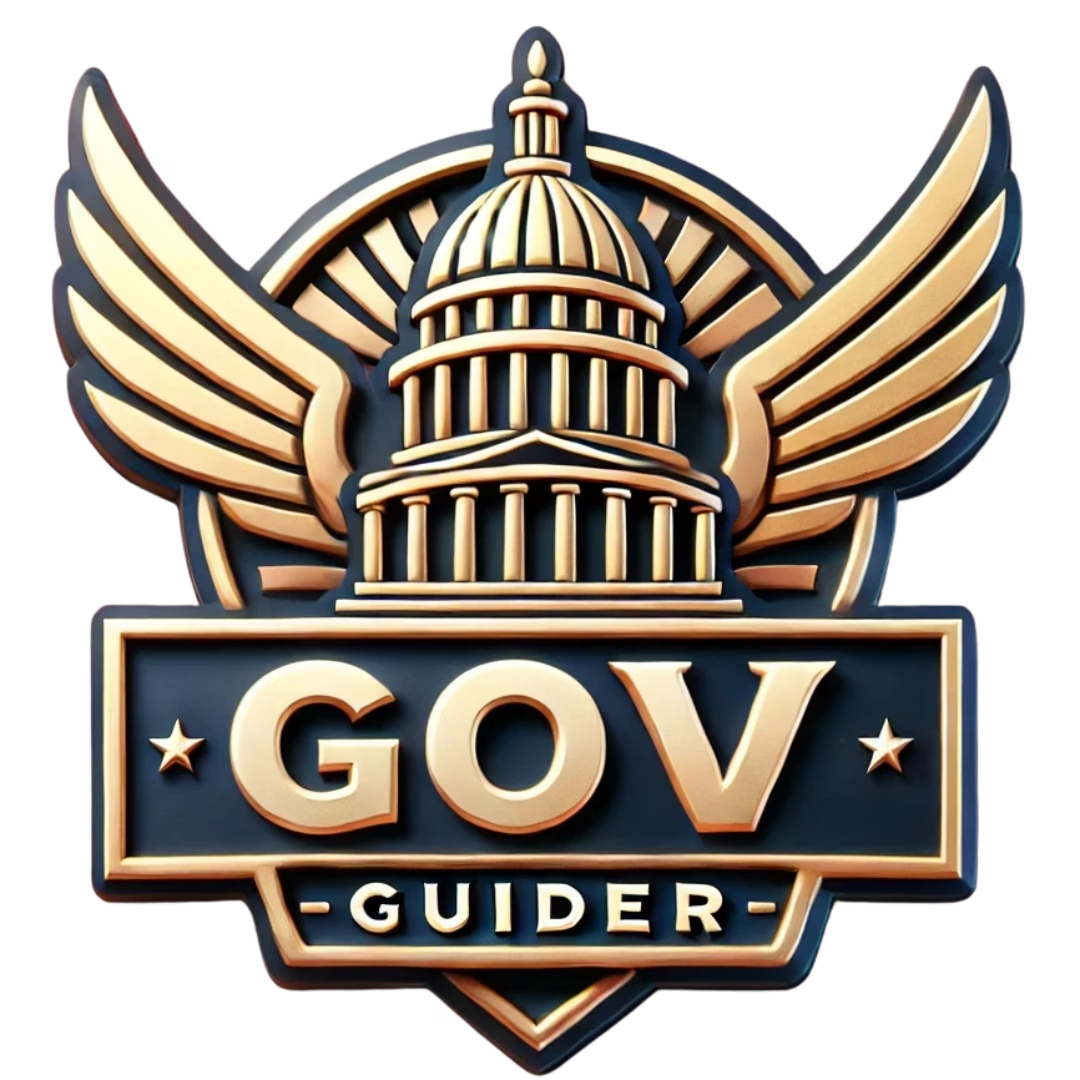Key Takeaways
- Understand the eligibility criteria for the $1400 COVID relief to maximize your benefits.
- Gather essential documentation to support your application for federal assistance COVID programs.
- Stay informed about the current status of COVID loans and other financial assistance options available for businesses.
- Recognize common myths about COVID relief funds to avoid misinformation and navigate the application process effectively.
- Explore various types of federal assistance programs designed to support individuals and families during economic hardships.
As the impact of the pandemic continues to resonate, understanding federal assistance COVID programs has become crucial for many Americans seeking financial relief. This article aims to guide you through the complexities of federal assistance COVID, detailing who qualifies for the $1400 COVID relief, verifying the authenticity of these programs, and exploring the various types of assistance available. We will also address pressing questions such as, “Are COVID loans still available?” and “Why did I get $2800 from the IRS today?” By breaking down eligibility criteria and providing a step-by-step guide to the application process, we ensure that you are well-equipped to navigate the landscape of federal assistance. Join us as we uncover the essential insights and resources that can help you secure the support you need during these challenging times.
Who qualifies for $1400 COVID relief?
Understanding Federal Assistance COVID Eligibility
To qualify for the $1400 COVID relief stimulus check, also known as the Recovery Rebate Credit, individuals must meet specific income criteria set by the IRS for the tax year 2021. Here are the key eligibility requirements:
- Income Limits:
- Single filers with an adjusted gross income (AGI) of up to $75,000 are eligible for the full $1400 payment.
- Married couples filing jointly can qualify with a combined AGI of up to $150,000.
- Heads of household can receive the full amount if their AGI is up to $112,500.
- Dependent Eligibility:
Taxpayers can claim an additional $1400 for each qualifying dependent, including children and certain adult dependents. - Filing Status:
Eligibility is contingent on your filing status. Ensure that you file your taxes accurately to reflect your income and dependents. - Citizenship and Residency:
You must be a U.S. citizen or a resident alien to qualify for the stimulus check. - Non-filers:
Individuals who do not typically file taxes may still qualify. They can register through the IRS Non-Filers tool to receive their payment.
For more detailed information and updates, you can visit the IRS website or consult resources like Gov Guider, which provides guidance on government benefits and eligibility. Always ensure to check the latest IRS guidelines as policies may change.
Key Requirements for COVID Relief Funds
Understanding the key requirements for COVID relief funds is essential for ensuring you receive the assistance you need. Here are the primary factors to consider:
- Documentation:
Gather necessary documents such as your tax returns, proof of income, and identification to support your application. - Application Process:
Follow the application guidelines provided by the IRS or your state’s assistance program to ensure a smooth process. - Timeliness:
Submit your application promptly to avoid missing out on available funds. Deadlines can vary based on the program. - Updates and Changes:
Stay informed about any changes to eligibility or funding availability by regularly checking official resources.
By understanding these key requirements, you can better navigate the process of applying for COVID relief funds and ensure you meet the necessary criteria. For further insights, explore additional resources on government assistance for low-income families.

Is the COVID Relief Fund Real?
Yes, the COVID relief fund is real and is officially known as the Coronavirus Relief Fund (CRF). Established under the Coronavirus Aid, Relief, and Economic Security (CARES) Act, the CRF allocates $150 billion to state, local, and tribal governments to help them manage the financial impact of the COVID-19 pandemic.
Key details about the Coronavirus Relief Fund include:
- Purpose: The fund is designed to provide financial assistance to governments for necessary expenditures incurred due to the public health emergency, including costs related to healthcare, public safety, and economic support.
- Eligibility: State and local governments, as well as tribal governments, are eligible to receive these funds. Each state receives a minimum allocation, with additional funds distributed based on population.
- Usage Restrictions: Funds must be used for expenses that were not accounted for in the most recent budget and must be incurred between March 1, 2020, and December 30, 2021. This includes costs for public health response, such as testing and contact tracing, as well as support for local businesses and workers.
- Application Process: Governments must apply for the funds through their respective state treasury departments. The U.S. Department of the Treasury oversees the distribution and compliance of these funds.
For more detailed information, you can refer to the official U.S. government website and the U.S. Department of the Treasury for the CARES Act documentation. Additionally, resources like the National Association of Counties (NACo) provide insights on how local governments can effectively utilize these funds to support their communities during the pandemic.
Common Myths About COVID Relief Funds
Despite the clear existence of the COVID relief fund, several myths persist that can mislead individuals about its purpose and availability. Here are some common misconceptions:
- Myth 1: The COVID relief funds are only for businesses.
Reality: While businesses can benefit from various relief programs, the Coronavirus Relief Fund primarily supports state and local governments to address public health and safety needs. - Myth 2: All individuals can apply for COVID relief funds directly.
Reality: The funds are allocated to governments, which then determine how to distribute assistance to residents and businesses within their jurisdictions. - Myth 3: The funds are unlimited and available indefinitely.
Reality: The CRF has specific funding limits and deadlines for usage, emphasizing the need for timely application and allocation.
Understanding these myths is crucial for navigating the landscape of federal assistance COVID programs effectively. For more information on eligibility and available resources, check out our guide on financial support programs.
What are federal assistance programs?
Federal assistance programs are government initiatives designed to provide financial support and resources to individuals and families facing economic hardship. These programs aim to alleviate poverty, improve living conditions, and promote self-sufficiency. Key categories of federal assistance programs include:
- Food Assistance: Programs like the Supplemental Nutrition Assistance Program (SNAP) offer benefits to help low-income individuals and families purchase food. According to the USDA, SNAP serves over 40 million Americans, providing essential nutrition support.
- Unemployment Benefits: The Unemployment Insurance (UI) program provides temporary financial assistance to workers who have lost their jobs through no fault of their own. This program is crucial for maintaining economic stability during periods of unemployment.
- Welfare Benefits or Temporary Assistance: The Temporary Assistance for Needy Families (TANF) program offers financial aid and support services to low-income families with children. TANF aims to promote job preparation and work opportunities.
- Emergency Housing Assistance: Programs such as the Emergency Solutions Grant (ESG) provide funding to assist individuals and families experiencing homelessness or at risk of becoming homeless, ensuring access to safe and stable housing.
- Rental Assistance Programs: The Housing Choice Voucher Program (Section 8) helps low-income families afford safe and decent housing in the private market. This program is vital for reducing housing instability.
- Help with Utility Bills: The Low-Income Home Energy Assistance Program (LIHEAP) assists eligible households in managing their energy costs, ensuring that families can maintain essential utilities.
- Home Repair Assistance Programs: Initiatives like the USDA Rural Development’s Single Family Housing Repair Loans and Grants provide funding for home repairs to low-income homeowners, enhancing safety and livability.
For more detailed information on federal assistance programs, individuals can visit the official government website, USA.gov, which serves as a comprehensive resource for accessing various assistance programs and services.
Types of Federal Assistance COVID Available
During the COVID-19 pandemic, various federal assistance programs were established to support individuals and families affected by the crisis. These programs include:
- Economic Impact Payments: Direct payments to eligible individuals and families aimed at providing immediate financial relief.
- Paycheck Protection Program (PPP): Loans designed to help small businesses keep their workforce employed during the pandemic.
- Emergency Rental Assistance: Funding to assist tenants unable to pay rent due to COVID-related hardships.
- Expanded Unemployment Benefits: Additional financial support for those who lost their jobs due to the pandemic.
These programs have played a crucial role in helping Americans navigate the financial challenges posed by the pandemic. For ongoing updates and information on available assistance, you can refer to Benefits.gov.
Are COVID Loans Still Available?
As of October 2023, the COVID-19 Economic Injury Disaster Loan (EIDL) program is no longer accepting new applications. The U.S. Small Business Administration (SBA) officially ceased accepting applications for COVID-19 EIDL loans and advances on January 1, 2022. Furthermore, as of May 6, 2022, the SBA stopped processing requests for loan increases and reconsiderations for previously declined applications. While the COVID-19 EIDL program has ended, businesses may still explore other financial assistance options.
Current Status of COVID Loans and Relief Options
Although the EIDL program has concluded, there are still various financial assistance options available for businesses impacted by the pandemic. The SBA offers several loan programs, such as the 7(a) Loan Program and the 504 Loan Program, which can provide funding for small businesses. Additionally, local and state governments may have their own relief programs available for businesses affected by the pandemic. For the most current information on available financial assistance, businesses should consult the SBA’s official website and other authoritative resources.
How to Apply for COVID Loans
While the COVID-19 EIDL program is no longer operational, applying for other SBA loans is a straightforward process. Here are the steps to follow:
- Determine Eligibility: Review the eligibility requirements for the specific loan program you are interested in, such as the 7(a) or 504 loan.
- Gather Documentation: Prepare necessary documents, including business financial statements, tax returns, and a business plan.
- Find a Lender: Locate an SBA-approved lender through the SBA’s website or local resources.
- Submit Your Application: Complete the application process with your chosen lender, ensuring all required information is included.
- Follow Up: Stay in contact with your lender for updates on your application status and any additional requirements.
For more detailed guidance on financial assistance programs, visit financial support programs or explore government assistance for low-income families.

Why did I get $2800 from the IRS today?
If you received $2,800 from the IRS, it is likely due to the Economic Impact Payments (EIPs) associated with the COVID-19 pandemic. Here’s a detailed breakdown of why you might have received this amount:
- Stimulus Payments: The IRS issued multiple rounds of stimulus checks to help individuals and families during the pandemic. The most recent payments included up to $1,400 per eligible individual and $2,800 for married couples filing jointly without dependents.
- Eligibility Criteria: To qualify for the full amount, your adjusted gross income (AGI) must be below certain thresholds. For single filers, the full payment is available if your AGI is $75,000 or less. For married couples filing jointly, the threshold is $150,000. Payments are gradually reduced for incomes above these limits.
- Dependent Considerations: If you have dependents, you may have received additional funds. The IRS provided $1,400 for each qualifying dependent, which could significantly increase your total payment.
- Tax Credits: The amount you received could also be related to the Child Tax Credit or other refundable tax credits that were expanded during the pandemic. For instance, the Child Tax Credit was increased to $3,600 for children under 6 and $3,000 for children aged 6 to 17 for the 2021 tax year.
- Direct Deposit or Check: Payments were issued via direct deposit or mailed as checks. If you have recently filed your taxes and provided your banking information, you may have received your payment directly in your account.
For more information on stimulus payments and eligibility, you can visit the IRS website or consult resources like Gov Guider, which provides guidance on government benefits and payments. Always ensure to check your eligibility and the latest updates directly from authoritative sources to avoid misinformation.
Common Reasons for Unexpected IRS Payments
Receiving an unexpected payment from the IRS can raise questions. Here are some common reasons for such payments:
- Refunds: If you overpaid your taxes in previous years, the IRS may issue a refund, which could appear as an unexpected payment.
- Tax Credits: Changes in your eligibility for tax credits, such as the Earned Income Tax Credit (EITC) or the Child Tax Credit, can result in additional payments.
- Economic Impact Payments: As mentioned, these payments were designed to provide financial relief during the pandemic, and you may receive them even if you did not expect it.
- Adjustments: The IRS may adjust your tax return based on new information or corrections, leading to a payment you weren’t anticipating.
It’s essential to keep track of your tax filings and any communications from the IRS to understand the reasons behind any unexpected payments. For further assistance, consider exploring financial support programs that may be available to you.
Are seniors getting a $2000 stimulus check?
As of now, there are no new federal stimulus checks, including a $2000 payment specifically for seniors. The last major round of economic impact payments occurred during the COVID-19 pandemic, and there have been no official announcements regarding additional payments for 2025. It’s essential to stay informed about federal assistance COVID eligibility and any potential updates regarding stimulus payments.
Federal Assistance COVID for Seniors: What to Know
While the prospect of a $2000 stimulus check for seniors is currently unfounded, there are various forms of federal assistance available that seniors can explore. Programs such as Supplemental Security Income (SSI) and other local government initiatives aim to provide financial support to older adults. For accurate information, seniors should refer to official resources like the Social Security Administration and the IRS.
Eligibility Criteria for Senior Stimulus Checks
Historically, eligibility for stimulus checks has been based on income levels, tax filing status, and other factors. Although there are no current plans for a new stimulus check, seniors should remain aware of their eligibility for existing programs. For instance, many seniors qualify for various forms of federal assistance COVID programs, which can help alleviate financial burdens. It’s advisable to consult resources like government assistance for low-income families to understand available options.
Federal assistance COVID application
Applying for federal assistance related to COVID can be a straightforward process if you understand the necessary steps and requirements. This guide will walk you through the application process, ensuring you have the information needed to successfully access the support available to you.
Step-by-Step Guide to Applying for Federal Assistance COVID
To apply for federal assistance COVID programs, follow these steps:
- Determine Your Eligibility: Before applying, check if you meet the federal assistance COVID eligibility criteria. This may include income limits, residency requirements, and specific documentation.
- Gather Required Documents: Collect necessary documents such as proof of income, identification, and any other relevant paperwork that supports your application.
- Choose the Right Program: Identify which federal assistance COVID program suits your needs. Options may include unemployment benefits, housing assistance, or direct cash payments.
- Complete the Application: Fill out the application form accurately. You can often find these forms on official websites like USA.gov or Benefits.gov.
- Submit Your Application: Follow the submission guidelines carefully, whether applying online or via mail. Ensure you keep a copy of your application for your records.
- Follow Up: After submission, monitor the status of your application. You may need to provide additional information or documentation if requested.
Resources for Federal Assistance COVID Applications
Several resources can assist you in the application process for federal assistance COVID programs:
- U.S. Small Business Administration – Offers resources for businesses affected by COVID.
- Federal Emergency Management Agency – Provides information on disaster assistance programs.
- U.S. Department of Housing and Urban Development – Offers housing assistance and resources for renters and homeowners.
- Social Security Administration – Information on benefits for individuals with disabilities and seniors.




